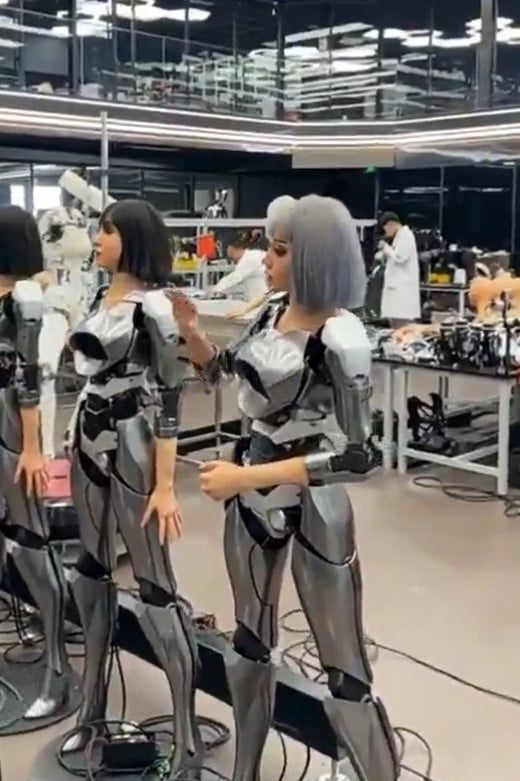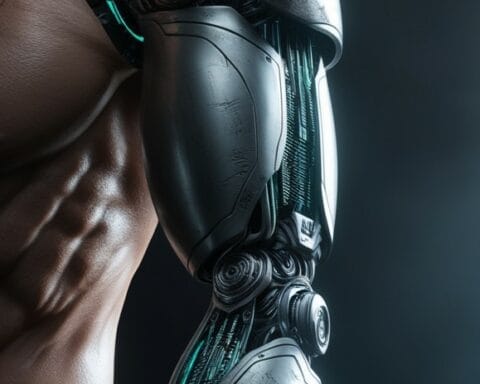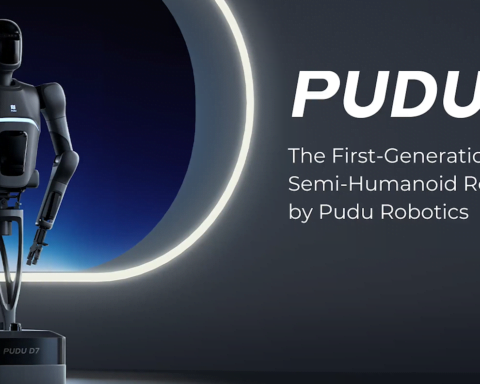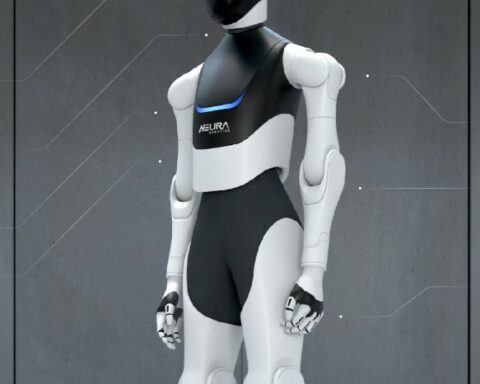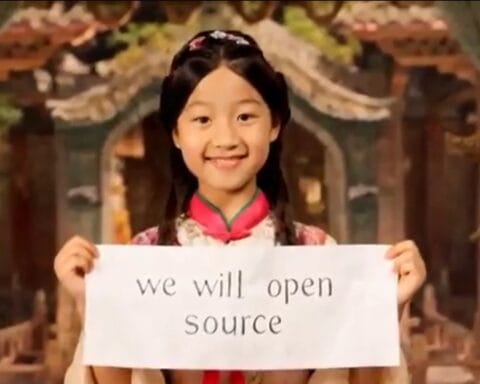Last Updated on May 10, 2024 11:21 am by Laszlo Szabo / NowadAIs | Published on May 10, 2024 by Laszlo Szabo / NowadAIs
World of Chinese Humanoid Robots Pushing the Boundaries: You’ll Get Goosebumps – Key Notes
- ExRobots’ Realism: Showcases lifelike androids, blurring the lines between humans and machines.
- Practical Applications: Companies like Unitree and UBTech are advancing humanoid robots for practical uses beyond entertainment.
- Global Influence: Chinese companies are rapidly catching up to North American leaders in robotics technology.
- Technological Advancements: Introduction of sophisticated robots capable of complex movements and tasks.
- Cultural Impact: The development of humanoid robots in China is shaping perceptions and expectations of technology worldwide.
Introduction
In the rapidly evolving landscape of robotics, China has emerged so quickly, pushing the boundaries of what was once thought possible. The rise of Chinese humanoid robots has captivated the global audience, igniting a sense of wonder and curiosity about the future of human-machine interaction. From the uncanny realism of ExRobots’ animatronic creations to the cutting-edge advancements of companies like Unitree and UBTech, the world is witnessing a revolution in the field of humanoid robotics.
Blurring the Lines: ExRobots and the Uncanny Valley
One of the most striking examples of Chinese humanoid robots comes from ExRobots, a company that has garnered attention for its lifelike androids. A recent video from inside their factory has sent shockwaves through the internet, showcasing partially skinned humanoids with human-like hair, skin, and movements. This level of realism has plunged viewers deep into the uncanny valley, a phenomenon where humanlike robots elicit a sense of unease and discomfort.
Embracing the Fleshy Titillation
ExRobots’ approach to humanoid design is not without controversy, as the company has clearly embraced the fleshy titillation of their creations. The attention to detail in the boobular fembots, complete with goosebumps on their silicone leg skin, suggests a deliberate attempt to captivate and intrigue the audience. This strategy, while polarizing, has undoubtedly succeeded in drawing attention to the company’s capabilities.
Animatronics or Robotics?
While the ExRobots’ humanoids may appear to be cutting-edge robotics, they are, in fact, highly advanced animatronics. The company’s “Ex Future Science and Technology Museum” in Dalian showcases a range of lifelike characters, from Einstein to Edison, blurring the line between reality and fiction. Visitors can even “drive” a humanoid head using motion capture, further immersing themselves in this uncanny world.
The Rise of Practical Humanoid Robotics in China
While ExRobots may be grabbing headlines with their uncanny androids, the real story in Chinese humanoid robotics lies with companies focused on developing practical, general-purpose robots. Firms like Unitree, UBTech/Baidu, Astribot, LimX, Kepler, and the Beijing Humanoid Robot Innovation Center are making significant strides in creating robots capable of learning and executing useful tasks.
Bridging the Gap with North American Counterparts
China’s advancements in humanoid robotics are not to be underestimated. In fact, the country’s companies are quickly catching up to their North American counterparts, with firms like Tesla, Figure, Sanctuary, Agility, Apptronik, and Boston Dynamics leading the charge.
The Grandaddy of the Field: Boston Dynamics
Speaking of Boston Dynamics, the company is widely regarded as the grandaddy of the humanoid robotics field. With the upcoming release of their next-generation Atlas robot, which ditches the highly athletic predecessor’s hydraulic motors for electric actuators, the world is eagerly anticipating the next leap in humanoid movement and capabilities.
Embracing the Humanoid Future
Whether we are captivated by the uncanny realism of ExRobots’ creations or inspired by the practical advancements of companies like Unitree and UBTech, one thing is clear: the future of Chinese humanoid robotics is a future that will forever change the way we interact with and perceive the world around us. As we embrace this humanoid revolution, the possibilities are truly limitless.
Definitions
- Humanoid Robot: A robot designed to resemble the human body, often aiming to replicate human movements and interactions.
- Exrobot: Known for creating highly realistic animatronic figures rather than true robots, blending entertainment with technology.
- Unitree: A robotics company that focuses on practical, mobile robots capable of various physical tasks.
- UBTech/Baidu: Collaborative efforts between UBTech and Baidu in advancing robotics technologies for practical applications.
- Astribot: A developer of humanoid robots designed for interactive and service-oriented tasks.
- LimX: Specializes in creating robots with advanced mobility and interaction capabilities.
- Kepler: Focuses on robotics aimed at exploring and operating in human-like environments.
- Tesla: While primarily known for electric vehicles, also involved in developing AI and robotics technology.
- Figure: A company developing humanoid robots with emphasis on dynamic movements and human interactions.
- Sanctuary: Creates robots designed to operate autonomously with advanced cognitive abilities.
- Agility: Develops robots that emphasize physical agility and versatility in varied environments.
- Apptronik: Known for creating robots that assist in daily tasks through advanced mechanics and AI.
- Boston Dynamics: Pioneers in the field of robotics, known for their development of highly advanced robots like Atlas, showcasing exceptional mobility and task adaptability.
Frequently Asked Questions
- What are Chinese Humanoid Robots known for? Chinese humanoid robots are renowned for their advanced design and functionality, ranging from Exrobot’s lifelike figures to practical robots from companies like Unitree, which are designed to perform complex tasks and interact with their environments effectively.
- How are Chinese Humanoid Robots impacting the global robotics industry? These robots are setting new benchmarks for innovation and realism in robotics, influencing global trends and pushing the boundaries of what robots can do in everyday life and industry settings.
- What makes Exrobot’s humanoid robots unique? Exrobot specializes in animatronics that are incredibly lifelike, designed to mimic human appearance and movements closely, often used in entertainment and educational settings to create engaging experiences.
- What can we expect from Chinese Humanoid Robots in the future? Future developments in Chinese humanoid robotics are likely to focus on enhancing robot intelligence, functionality, and integration into various sectors such as healthcare, customer service, and complex industrial applications.
- How do Chinese Humanoid Robots compare with their international counterparts? Chinese humanoid robots are quickly catching up to leaders like Boston Dynamics, with innovations that rival and sometimes exceed those of their Western counterparts in terms of design, functionality, and technological integration.
